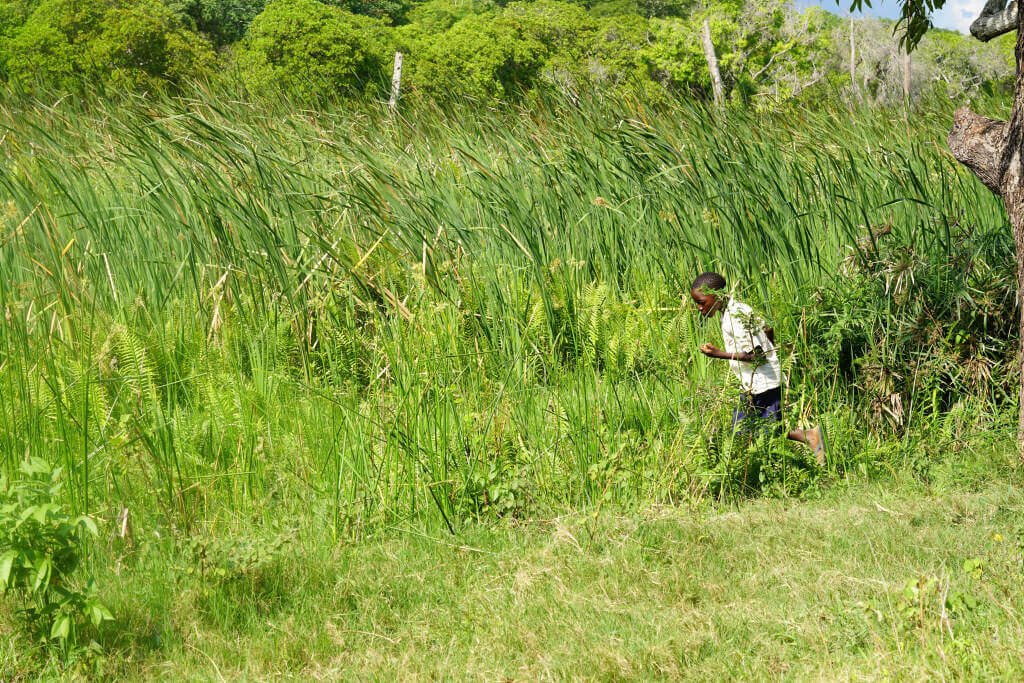Creating sustainable water supply across Southern Africa
To support sustainable water management, build resilience from the impacts of climate change and prevent water-related conflicts across borders, the UK Aid-funded Climate Resilient Infrastructure Development Facility (CRIDF), is investing £30 million and aims to mobilise a further £55 million of new investment in the water sector across 12 countries in Southern Africa. What is the impact? Here is an example from Tanzania.
In the villages of Mitema and Kitangari in the Newala District in southern Tanzania, things are changing quickly.
More children are going to school, a new nursery is planned to open and new houses are popping up like fast-growing mushrooms. The reason: Easy access to fresh water.
With support from the CRIDF programme, the Tanzanian Makonde Water Supply and Sanitation Authority (MWSSA) is renovating and constructing new water infrastructure to ensure sustainable water supply for approx. 510,000 people in the Newala and Tandahimba districts, among the poorest in Tanzania.
The first investment by CRIDF saw the rehabilitation of Mitema wellfield, with installation of six deep boreholes with new pumps and control instrumentation. This has more than quadrupled water supply capacity.
Located just a few kilometers from a renovated supply source, Mitema is among the first villages to feel the impact. A few months ago, with funding from the Tanzania government, pipes were installed and connected the village to the water scheme nearby and local water kiosks were established in the village.
“Before we had to harvest rainwater or walk to the wetlands and try to collect water leaking from the old pumps. It was very time consuming, it was not safe because of snakes and the water was not very clean. Now we can just open one of the taps installed in the village. It has changed our lives,” Halima Hassan, a local villager explains.
Life-changing water scheme in place
Before CRIDF got involved there was already a MWSSA water supply scheme in place consisting of six boreholes and an aging pump infrastructure supplying water to the town of Newala and its surrounding villages. However, the scheme suffered constant breakdowns, with one borehole functional at most times. The growing population, faulty equipment, heavy leakages and low pressure all contributed to a highly inadequate supply.
The aim is therefore to rehabilitate and install new, robust pumps and motors to ensure that the water supply from the pump house is operating as efficiently as possible to supply enough water for the entire district.
The rehabilitated boreholes, pipework and new pumps are now in place - next phase is the rehabilitation of the treatment plant including dosage pumps, upgrade treated water transmission and distribution networks and balancing storages through a further £1.5million investment.

Preventing conflict and climate inflicted water shortage
The Newala and Tandahimba districts close to the border of Tanzania and Mozambique are not the only areas that have been or are still lacking sufficient water supply in Sub-Saharan Africa.
In fact, global water demand is expected to increase with 55% by 2050 due to population growth, particularly on the African continent.
Climate change creates further pressure on water resources and without proper planning and policy, experts predict that water-related conflicts are going to become more common.
That is why UK’s Department for International Development (DFID), in partnership with the Southern African Development Community (SADC), is investing massively in water related projects across 12 countries in Southern Africa. In so doing, CRIDF aims to improve the lives of over 20 million people, who live in extreme poverty in rural areas.
“More people will need to share the transboundary waters in the future as populations are set to grow and climate change puts further stress on the water resources in some of the poorest areas of Africa. Therefore, our support work follows three key principles: build Climate resilience, be pro-poor and promote transboundary cooperation,” says Leonard Magara, CRIDF Chief Engineer (Project Director in COWI, a CRIDF JV partner).
"Before we had to harvest rainwater or walk to the wetlands and try to collect water leaking from the old pumps. Now we can just open one of the taps installed in the village. It has changed our lives."
How excited do you get when you see running water? Watch video from the village of Kitangari and interview with COWI engineer Malumbo Mhamilawa, country project coordinator and a key member of the project implementation team.
Teaming up with local partners
To achieve its goals, CRIDF works to mobilize financial resources for projects in the region, and to advise partners of the best way to select, manage and implement their projects.
An important part of this approach is that CRIDF teams up with local partners to together put infrastructure in place.
“Basically, we believe that physically working hands-on together with people and their organisations while showing them how to employ climate-resilience techniques is the best way to bring about transformation towards successful long-term development and management of water infrastructure,” says Leonard Magara.
 Until now, rainwater harvesting has been the primary water resource in the Newala District.
Until now, rainwater harvesting has been the primary water resource in the Newala District.
Water supply set to reach entire district
The approach has borne fruit across CRIDF projects in countries such as Lesotho, Namibia, Zimbabwe, Zambia, Mozambique and Tanzania.
Rejea Ng’ondya, Managing Director at the Makonde Water Supply and Sanitation Authority, CRIDF’s local partner in Tanzania, cherishes the results so far:
“There is still a lot of work that needs to be done, before we can reach the entire district with fresh water. But the foundation with six boreholes, new pumps and water tanks are now in place because of good collaboration and support from the CRIDF programme. Next step is to build the piping system, so the water can be distributed to all villages in the district,” says Rejea Ng’ondya.

Close dialogue to manage expectations
The positive results have not come without challenges. Among others, there was an initial price to pay for the local villagers in Mitema, as they used to grow crops in the wetlands, where the water scheme is located.
Socio-economic activities in the wetlands and riparian catchment had contributed to the drying of the wellfield. Now, they were told to abandon their crops to give room for the restoration of the aquifer to rehabilitate the wellfield for boreholes of the old water scheme, originally built in 1957.
“From the very beginning, the local communities were invited to meetings about the proposed changes. Purpose was to build a good dialogue and make sure they knew what was going on. I believe this created an acknowledgement that the potential gains would be greater than the initial loss of giving up their crops close to the boreholes,” says COWI-engineer Malumbo Mhamilawa, country project coordinator and a key member of the project implementation.
So far, Halima Hassan feels reassured that things are changing for the better. Among others, she now has time to teach at the local primary school besides growing her crops:
“We had to relocate our crops, but it was worth it. With the better water supply, the farm land elsewhere is improving, and more children are coming to school, because they don’t have to help their families collecting water. With time, I think health conditions will improve as well, because we don’t have to use dirty water collected through rainwater harvesting or from leaking pipes in the wetlands.”
Facts about global water resources:
- In 2015, 91% of the world’s population had access to an improved drinking-water source, compared with 76% in 1990.
- However, water scarcity still affects 1 in 3 people in the African Region and is getting worse with population growth, urbanization and increases in household and industrial uses.
- Consequently, many turn to surface water which is generally polluted by industrial wastes, bacteria or human waste; and people have no choice but to drink from, bathe in or wash their clothes in these areas, creating a vicious cycle.
- Contaminated water can transmit diseases such diarrhoea, cholera, dysentery, typhoid and polio. Contaminated drinking-water is estimated to cause 502 000 diarrheal deaths each year.
- People, particularly women and girls, spend a significant amount of time traveling some distance to collect water.
- On average, they have to walk 6 km every day to fetch water. This limits their ability doing other things like growing food or earning an income.
- In Sub-Saharan Africa, water demand is expected to increase 55% by 2050 due to population growth.
About the CRIDF programme
The Climate Resilient Infrastructure Development Facility (CRIDF) is an official Southern African Development Community (SADC) programme. It is supported by DFID (UK Aid) and working to provide long-term solutions to water issues that affect the lives of the poor in Southern Africa.
CRIDF focuses strongly on sharing technical expertise with local engineers on water infrastructure projects. The skills that the engineers learn include holistic design approaches, climate-resilient techniques, as well as approaches that benefit marginalised groups.
These skills are then transferred to many other projects and engineers across the region. The aim is to ensure that the future of infrastructure planning and operation will be secure, even after CRIDF ends.
Read more: www.cridf.net
COWI’s role: Provides technical experts for the entire programme and takes up the role as a 50/50 JV partner with WYG.
